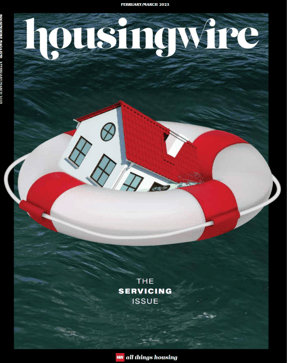Blockchain technology is changing the way business operates in virtually every industry across the world. How should it be harnessed for mortgage servicing? Industry thought leaders addressed blockchain and mortgage servicing at the inaugural Five Star Fintech Summit in Nashville, Tennessee, March 21–March 22 , 2018. Aspen CEO Sean Ryan was among the experts exploring how the new technology could increase transparency and reduce the costs of regulatory compliance.
What is blockchain?
First a quick primer: Blockchain is creating a lot of buzz—and a lot of confusion. Essentially, what blockchain offers is the capacity to record and monitor transactions in what is called a distributed ledger (a decentralized database). Each block is a record of new transactions that is added to the previous one to create a chain of blocks—hence blockchain.
Transactions are recorded in real time in blocks and are visible to everybody with permission on the network. The transactions are tamper-proof once conditions are agreed and written into the ledger because each transaction block is tied in a linear fashion to the previous transactions.
Think about it for a second—real-time recording of transactions, full visibility, and tight security: These are all factors that the mortgage lending and servicing industries need. Lending and mortgage servicing are processes associated with significant risk and low levels of trust from origination through to servicing of the loan. We need to consider any approach that would reduce that risk and improve trust levels.
Key blockchain features that could benefit the mortgage servicing industry
Blockchain’s defining elements could add efficiency and transparency to the workings of the mortgage servicing industry. These elements are:
Distributed Ledgers
Blockchain works on the basis of decentralized databases called distributed ledgers. Instead of one party holding the information on a central ledger, it is stored on a public blockchain that offers a distributed way of validating a transaction. A distributed ledger could be created to contain real estate titles, planning permissions, deeds, and any other information relevant to the mortgage industry. Distributed ledger technology allows for shared control of data—specifically, who can alter or supplement the data and how they are authorized to do so. The blockchain network is distributed across multiple computers, creating a virtually unbreakable chain of protection against transaction falsification and speeding up the collection of mortgage-relevant information by mazimizing the ledger’s accessibility and availability.
The process tracks digitized transactions, so when authorized users validate these transactions on the blockchain they enhance transparency for audit and compliance purposes. Banks and lenders get clear line of sight of precisely what happened during the lending process—the parties involved, the individuals managing the authoritative copy of the digital assets, and the ultimate owner of the assets.
In blockchain banking, multiple network computers record transactions, which are settled by many individuals.
Smart Contracts
Smart contracts, otherwise called self-executing contracts, help you exchange items of value in a secure, transparent way without relying on an intermediary. The concept works on much the same principle as a vending machine, with the required item (e.g. digitized mortgage documents) being supplied on fulfillment of the required terms. Smart contracts operate on an If-Then premise, so they both define the rules and penalties around what the contract does and enforce those obligations.
The decentralized ledger could be used for smart contracts to digitize mortgage documents for storage and tracking by the network of computers that run the blockchain. This would also result in ledger feedback such as automated mortgage payments. This, in turn, would result in a substantial drop in operational costs and processing time of mortgage transactions, which would be beneficial to both the consumer and mortgage industry players.
A report by Capgemini Consulting called “Smart Contracts in Financial Services: Getting from Hype to Reality” states that the adoption of smart contracts by the mortgage loan industry could potentially save consumers between $480 and $960 per loan. It also calculates that banks could save between $3 billion to $11 billion annually by reducing processing costs in the origination process in the U.S. and European markets. These savings would result from the automation, process redesign, shared access to digitized legal documents, and access to such external documents associated with smart contracts.
Inherent Security
The length of the mortgage-lending life cycle and the sheer number of contracts and sensitive documents involved make it vulnerable to risk through all stages from origination to fulfilment of the loan. Many financial institutions still rely on paper for such valuable documents as mortgage notes, whose value disappears if they are lost or destroyed. Even electronic loan documents require strict oversight of chain of custody and ownership to maintain the integrity of the loan and the overall lending process. The distribution of the blockchain network across many computers creates an inherent layer of security that makes it incredibly difficult to falsify transactions. Furthermore, because each transaction block is tied to all previous transactions, it cannot be tampered with once the conditions are agreed and written to the ledger. Cryptography authenticates and verifies transactions, maintains privacy and allows participants to see only the parts of the ledger that are relevant to them.
Digital Payments
Blockchain’s first and most famous application centered on digital currency. The cryptocurrency Bitcoin was invented in 2008 as blockchain’s public ledger, and digital currency remains an intrinsic feature. Digital payments can be exchanged automatically for digital assets such as property titles in a synchronized process without the intervention of a notary or legal representative. Ultimately, if central banks created digital fiat currencies, they would have tighter control of monetary policy and improved oversight of financial payments, but they are likely to proceed cautiously. Commercial banks could speed up the process by creating their own private digital currency to allow clients to transact directly among themselves. If successful, they could inspire central banks to follow suit.
What the mortgage servicing industry needs to consider
The mortgage servicing industry is not known for embracing innovation early, and it will take several successful implementations before blockchain is adopted as a viable technology. In any case, blockchain is not without its challenges, and several technical obstacles need to be overcome before blockchain is accepted generally in the market:
Technical Challenges
- Data privacy concerns are a significant issue in an open distributed environment. More work needs to be done in the areas of math and cryptography to reduce the trade-offs between privacy, efficiency and trust.
- Security can be an issue with private blockchains. Any changes made to the database should be sent to all users immediately so that the record is secure. Once everybody has a copy of the data, the integrity of the overall database can withstand hacks on some users.
- Regulatory uncertainty hangs over the technology. The U.S. federal government has not regulated blockchain to the exclusion of states, so the states may introduce their own rules and regulations. So far, Arizona has recognized smart contracts, Vermont now accepts blockchain as evidence, Chicago is running a pilot project on real estate records, and Delaware has an initiative pending that would allow registration of shares of Delaware companies in blockchain form.
Despite these technical challenges, the future of blockchain in financial services seems unavoidable. The inherent transparency, efficiency, and security benefits of employing the technology suggest that blockchain will be an integral part of mortgage servicers’ future, and those institutions that embrace its benefits early will the ones that gain most.
Blockchain & the Five Star fintech summit
The inaugural Five Star Fintech Summit set out to jumpstart a new route for the U.S. residential mortgage and real estate industry, covering all aspects of financial technology and its future applications. Speakers from the technology, operations, and mortgage industry discussed the latest approaches to prioritizing consumer fintech. This two-day event focused on transparency, accessibility, and ease of use, with the aim of giving participants practical help in the form of actionable ideas and processes they can implement at their own organizations.
The organizers scheduled three sessions to discuss the role of blockchain in mortgage servicing. The first dealt with blockchain’s native capabilities as a platform for cross-border payment networks. Session two focused on the arguments for incorporating blockchain in servicing, mortgage, and title. Aspen CEO Sean Ryan participated in this discussion, together with Katie Jo Keeling of McCarty & Holthus, Marvin Stone of Stewart Title, and Jessica L. Fox of Freddie Mac. The final session dealt with the importance of incorporating blockchains properly in the highly regulated mortgage servicing environment.






